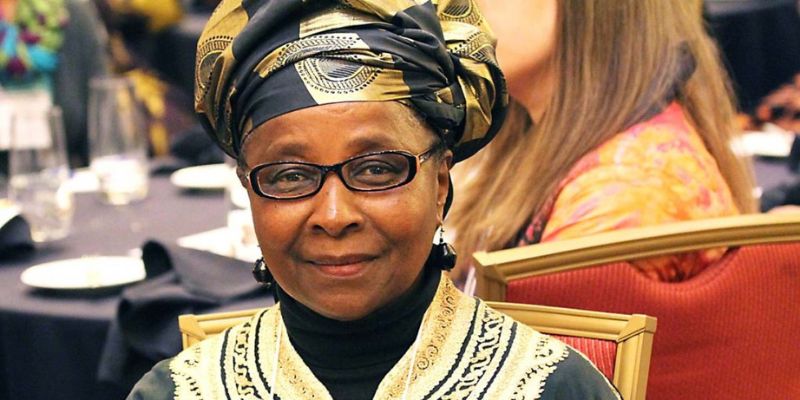It was the dawn of a new decade. The Kenya Colony was in the frenzy of transition. Behind it lay the trauma of the State of Emergency; ahead, the tantalising promise of Uhuru. In February 1961, the excitement rose to fever pitch: an African majority was elected for the first time in the colony’s Legislative Council, an important political development making manifest the reality of the “wind of change” sweeping not only across the rapidly diminishing British Empire but also right at home in the Kenya Colony itself. Everywhere, there was change in the air – euphoria for the majority, trepidation for others, as preparations were made in earnest for the birth of Kenya as a brand new independent nation.
On all fronts, the changes were happening; sometimes faster than the guardians and facilitators of the old colonial order were ready for. And so it is that change came to a little school, tucked in the heart of what was then called the White Highlands, where, according to school lore, a progressive headteacher, Veronica Owen, tabled a daring proposal. It was time, she said, for the school, which had begun as a small family initiative in 1922, to take the big step away from racial exclusion to integration. It was time for Limuru Girls School – as it celebrated 40 years as an educational institution that had served to this point an exclusively European student body – to transition into a multiracial institution.
To the school community, this was as momentous as the idea of independence was to many in the country. True, it wouldn’t be the very first time in the colony that students of different races would sit together in a classroom. In 1949, John and Joan Karmali, an interracial couple, had officially pioneered the first “non-racial” classes in the colony. With no other premises available, these had been held in the official residence of the Indian High Commissioner and in their own home. Later, as interest caught on amongst a tiny community of willing parents, the then Governor Phillip Mitchell facilitated the acquisition of the premises bequeathing it the name that it would become known by: Hospital Hill School. Thus began the first “brave, successful and doomed” experiment in instiling colour blindness in Kenya through racially integrated schooling – also noteworthy in that it was the first primary school in Nairobi to offer access to African pupils.
Up until that time, the assumption had been that African children were absent in the city. That the school had survived its first rocky decade despite the heightened political tensions of the fifties and the general disapproval of many in the settler elite, was possibly a source of inspiration to those at Limuru Girls School enthusiastic about the idea. Possibly, they were also aware of another initiative in the pipeline at the time: to set up a similar experiment in the form of an all-boys Sixth Form college – what ultimately became Strathmore. If this was the case, they must also have been very conscious that for their own school community, there were very important differences. Unlike Hospital Hill or the proposed Strathmore, the benefit of a committed and supportive school community united in the express vision of racial integration was not guaranteed. Then, there was also the fact that these other institutions were day schools, meaning that the children attending them would be living at home, making it possible for the parents to be constantly involved, on a day-to-day basis, in closely monitoring and offering daily support to guarantee their well-being. This would not be possible in a residential school. And finally, the student populations of both the Hospital Hill School and Strathmore College were racially integrated from the get-go, while in the case of Limuru Girls School, this would mean bringing in the bare minimum number of non-White students into one class on an experimental basis. It would not be exaggerating to consider those students as guinea pigs whose survival was a matter of optimistic conjecture, rather than as privileged winners of an educational jackpot.
It is safe to assume that support for the proposal was not unanimous and one can only imagine how vehement the reactions to the proposal must have been. Still, the advocates for the idea would not be deterred. The school was a Christian school, they pointed out. Would it not be the Christian thing to do? Finally, however, the decision was taken: two students only – one African, one Asian – would be given the opportunity for two years to prove the intellectual and social worth of their respective races to the school community.
Story, story?
Story come!
Facts as foundation…
And so it was that in early 1961, Limuru Girls School embarked on its great experiment. Two pioneer students were invited to join the incoming Higher Certificate level class. The African student selected, Madeleine Mĩcere Gĩthae, had just excelled in her School Certificate examinations after four happy years at the African (later Alliance) Girls High School, where she had also been a popular head girl and active participant in a range of “extra” curricula activities. That school was also looking forward to a historic new class, 1961 being the seminal year when it would offer its pioneer Higher Certificate class. Either way, Madeleine Gĩthae, should she return to her former school or move on to this new opportunity, was set to be an educational pioneer in Kenya. The choice to join Kirpal Singh as the other pioneer non-European student in an entire school meant she would take the harder, lonelier path to engraving her name in the annals of the country.
Two students only – one African, one Asian – would be given the opportunity for two years to prove the intellectual and social worth of their respective races to the school community.
One could simply skip through the next couple of years by saying that the rest is history. The record does show that Madeleine Gĩthae did indeed go on to not only survive, but also to excel during her time at Limuru, passing every test set for her both in and out of the classroom. In her studies, she made nonsense of the notion of the alleged intellectual inferiority of the African, on the sports field she earned the grudging admiration of her peers by earning glory for the school. Throughout the six long terms that she was a student at the school, she gave those searching for reasons to bolster the case for continuing racial segregation in Kenyan schools nothing to point triumphantly to. By the time she left in 1962, she had flung wide open the doors of schools such as this one for the myriads of girls – and boys – of all races and classes who would come after her. She also graduated at the top of her class, earning a coveted scholarship to the University of Oxford. She turned this down – preferring instead to go to the University of East Africa at Makerere where … but that is a story for another time.
Story, story?
Story come!
Facts as foundation,
Spice creatively…
In some ways, this is the end of the story of those two years at Limuru Girls School… but in other ways, this is just the frame. To fill it out, I invite you to switch places with me as you become the storyteller and take the lead in a journey of imagination. Step back into that place, that time, step, for a moment, into the school shoes of a teenager facing the challenge of having such enormous responsibility placed on your shoulders. Ta imagini – to echo her older self – what it must have been like to leave home, a place where you were loved and cherished and affirmed, to go to boarding school for several weeks at a time. Ta imagini looking around you, once your parents had left, not at girls whose smiling faces promised the possibility of making new friends to set off with on an exciting adventure, but rather facing up to settling into this new environment, where the majority saw you as a lesser being, and deeply resented your presence. Ta imagini having to be in this lonely space for weeks on end with no respite; with even the handful of fellow students who might be a little sympathetic to your plight, careful not to cross the invisible boundaries of becoming too closely associated with you. Yes, ta imagini the direct personal experience of being on the frontline of the ugly racism that was at the core of the colonial education system.
And sure, one might argue, the success or failure of one schoolgirl would definitely not have been the end of the world. Kenya would have continued its inexorable march towards independence. Sooner rather than later, African and Asian students would have been welcomed at this school and many others as, indeed, racial exclusion died a timely death in Kenya – at least officially. But just for a moment, think about what it meant for this child facing the unknown to take a deep breath as the realisation set in of how utterly on her own she would be in the weeks to come, and most especially when immersed in the crowd of girls amongst whom she would never truly belong.
Yes, ta imagini the direct personal experience of being on the frontline of the ugly racism that was at the core of the colonial education system.
Limuru Girls School has a simple motto: In Fide Vade – in Faith We Go. I think of it as a reminder that schools are spaces that do more than prepare students for exams; they are important agents of socialisation, facilitating the future into being by nurturing the children that will live as adults in it. As I reflect on these two critical years of Mĩcere Gĩthae Mũgo’s childhood, in relation to the person she became, I find myself wondering what influence they might have had on her. In the discourse that pervades Kenya at the present time, as we tussle with the logistics of engineering the school structure and debate and discuss the ins and outs of the new curricula, I ask myself what exactly it is that we envision these critical spaces to be for and how far we have travelled from the challenges that six decades ago those in charge of the system were grappling with. What kind of impact will these critical years of their lives have on the students who are passing through our school institutions today?
With the benefit of hindsight, I wonder if it was during these years at Limuru Girls School that Mĩcere Gĩthae Mũgo developed a lifelong passion for “creating liberated zones” in educational institutions. If it was here that, having experienced the lifeline of companionship through the books that she clung to during the loneliest of times written by artists such as James Baldwin (whom she would later meet and become close friends with), that she determined that art could not be relegated to the margins of society. Was it here that she first deepened her appreciation of Orature not simply as part of the everyday experience of life that she had experienced it to be since she was a child, but also as a necessary weapon in the struggle for liberation and the attainment of the vision of a holistic and healed society? Was it in this space, during these years threaded through with the implicit questioning of her own humanity and her right to be treated as equal to her peers, that she commenced her “tireless pursuit of utu” as lifelong praxis? Was it in this period that she consciously embraced the responsibility of being “the first” – and this could be counted as the seminal of the many other “firsts” in her life – not as exclusive privilege to flaunt, or guarantor of special benefits and recognition, but as the opportunity to burst open spaces of exclusion to create access for others? Perhaps. Whether consciousness of all – or any – of these crystallised during this period, or whether these experiences formed into coherent praxis during the decades to follow, with the benefit of hindsight, these years settle into a metaphor for the legacy she challenges us to reflect on.
What kind of impact will these critical years of their lives have on the students who are passing through our school institutions today?
How tempting to bring this rumination to a close as a triumphant account of victory over all odds! In a way, this would be true to the facts and the spirit of this sharing, and yet … a lingering thought: If indeed the Limuru Girls School of 1961–1962 played a role in influencing Mĩcere Gĩthae Mũgo to become what so many today are testifying to as worthy of emulation, it wasn’t because the school set out to achieve that, but rather in spite of the many obstacles she encountered that might have resulted in a very different ending. With that in mind, how can this story end without sparing a thought for the many other children broken or deeply wounded from being on the frontline of different sites of the liberation struggle, in spaces and circumstances that have shaped the terrain we have inherited today? And for every one that has emerged scarred but victorious in their battle, how many more have been martyred? Would it be too much to ask that we honour the memory of each one of them, even as we remember the contributions of Mĩcere Gĩthae Mũgo, with unwavering commitment to creating liberated zones in our educational institutions, in whatever way “aluta continua” rings true in our lives?
And so the story ends, the story passes on,
This story weaves in, this story weaves out:
Story, story
Facts as foundation
Spice creatively
Mix and marinate!








